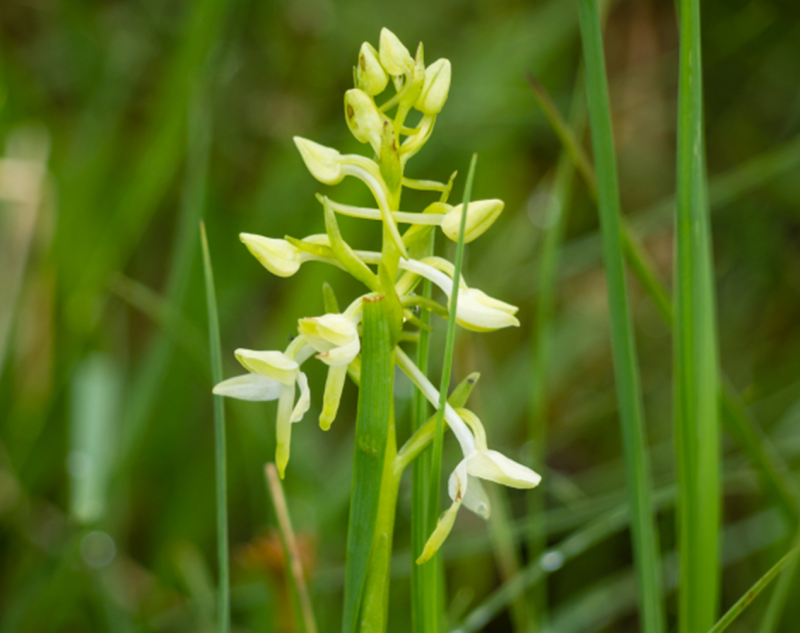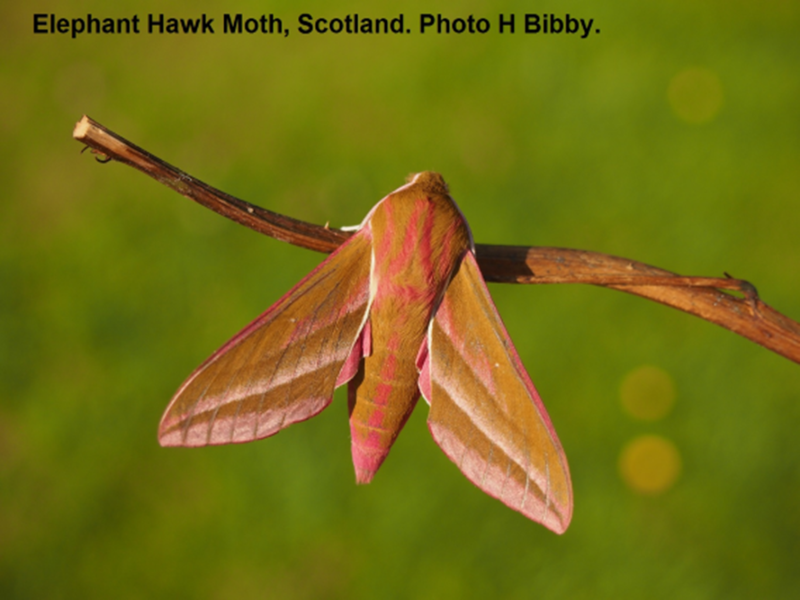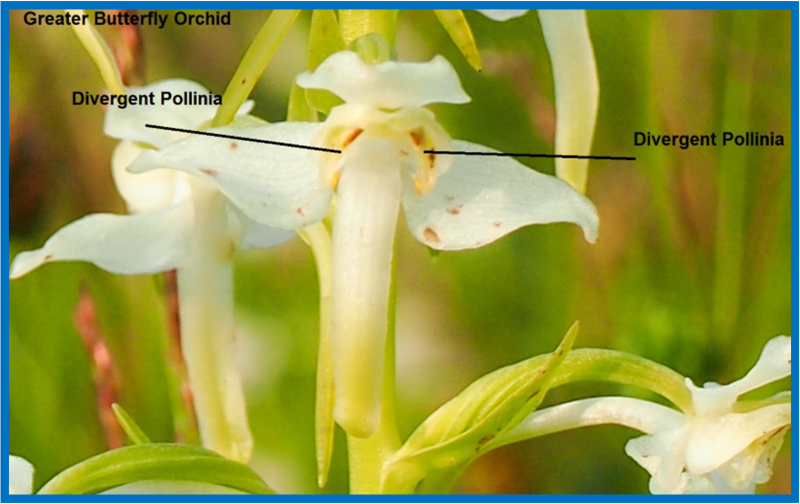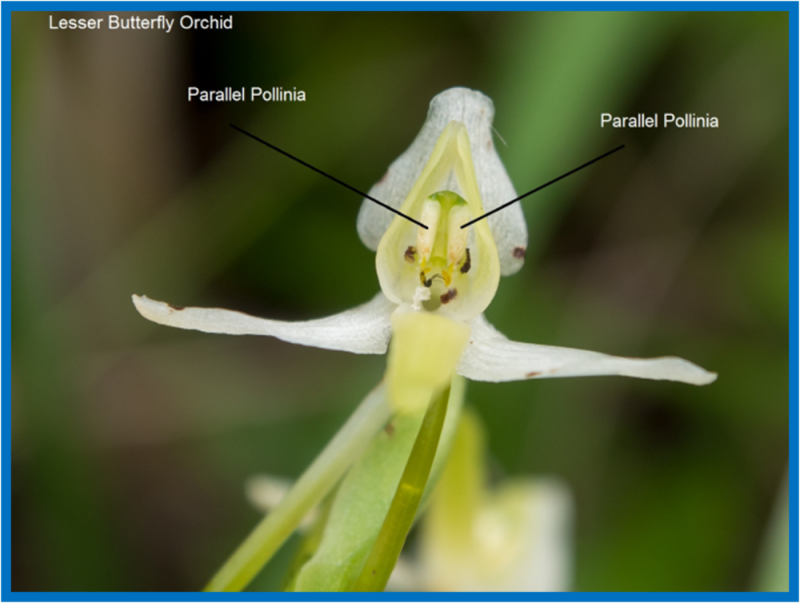Lesser Butterfly Orchid
Download a pdf copy of this Practical Guide
Action Points
Lesser Butterfly Orchid has a single flowering spike of creamy white flowers up to 30 cm in height. Two 5-8cm oval blunt leaves sit at the base of the plant. Don’t confuse with the more common Greater Butterfly Orchid.
- Don’t drain, plough fertilise or re-seed rough pasture and old meadows.
- The plant will decline under heavy grazing or cutting particularly when it’s repeated every year.
- Thrives best under light grazing as too little grazing causes dense tussocky grassland to develop excluding the orchids.
Habitat Requirements
Lesser Butterfly Orchid is a long-lived perennial which flowers from June to July.
Its habitat is open heath with damp acidic soils such as moorland and heath.
The flower spikes can be easily damaged in the spring as they emerge. The aim in all situations is to provide a level of grazing that allows plants to grow from early spring, flower in May and June and then set seed, but which keeps highly competitive vegetation under control.
The seeds, which are very small, can disperse widely on the wind but require a specific mycorrhizal fungus to germinate and for early development, without which the seeds are not
viable. The habitat requirements for this fungus are not known but it is susceptible to fertiliser and fungicides.

Management Requirements
For heathland sites, light grazing with pulses of periodic heavier grazing should be undertaken. Periodic grazing is likely to be more difficult on heathlands, but again the aim should be to maintain open habitats with a mosaic of grass and heather, without allowing the latter to dominate and outcompete the Lesser Butterfly Orchid.
Lesser Butterfly Orchids are indicators of ecologically important sites with a long history of low input grazing or cutting. They occur with wide range of associated biodiversity, including many insects and birds, both common and rare.

Differences between Lesser and Greater Butterfly Orchid
Lesser Butterfly Orchid looks very similar to Greater Butterfly Orchid, except that it is smaller, but this is difficult to see in the field. The most reliable way to tell them apart is to examine the angle and distance between the two club-shaped pollinia (pollen sacs) in the mouth of the flower which is easy to see. In
Lesser Butterfly Orchid the pollinia lie close together (c. 1 mm apart) and parallel forming a ‘II’ shape.
In Greater Butterfly Orchid they are widely-spaced at the base, divergent (c. 3-4 mm apart), forming an inverted ‘V’ shape.


Sign up to the FAS newsletter
Receive updates on news, events and publications from Scotland’s Farm Advisory Service
